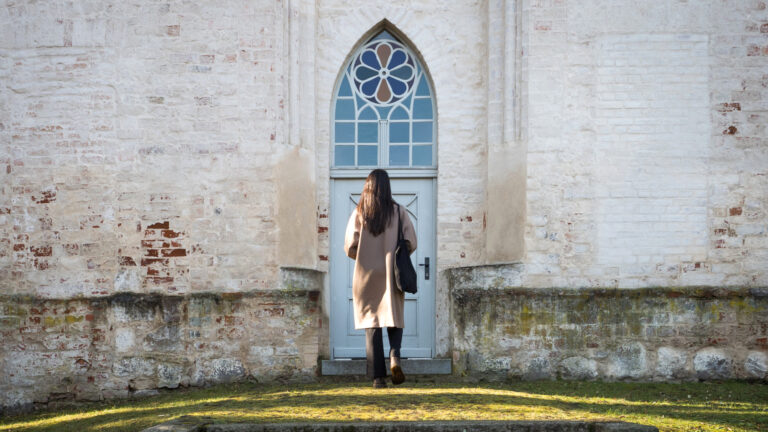In Matthew 24, atop the Mount of Olives, Jesus told his disciples, “This gospel of the kingdom will be preached in the whole world as a testimony to all nations, and then the end will come.” Almost 2,000 years later, we’re still here, which is all the proof we need to keep on preaching the gospel, especially in places it’s yet to be heard.
Yet the gospel message isn’t restricted to sermons or tracts or books. Think of how you first absorbed the good news. For many of us, I imagine it wasn’t through a sermon, but a song.
Keith and Kristyn Getty are convinced of the vital role music plays in Christian discipleship. This is why they’ve spent much of the past two decades writing new hymns and restoring old ones—to help Christians and churches continue “making melody to the Lord” (Eph. 5:19).
I corresponded with Keith Getty about their re-introduction of what he dubs the “greatest hymn on missions ever written,” how God uses music to shape Christians, other missions hymns your church should start singing, and more.
What’s the story behind the song “Facing a Task Unfinished”? Who wrote it and why?
Frank Houghton, an Anglican bishop and missionary to China, wrote the hymn in the 1930s. Originally it was written with a request to bring 200 more missionaries to China, which was a horrific period in Chinese history.
“Facing a Task Unfinished” was a hymn I grew up loving. So I began talks with OMF (China Inland Mission) about a new version around the time of TGC’s Missions Conference in 2013. OMF then approached me last year and asked if we would do something for their 150th anniversary in Singapore, where OMF director Patrick Fung planned to introduce a new challenge and revitalized vision for missions.
We were so excited for the hymn itself. I think it’s the greatest hymn on missions ever written. The vital importance of missions is present throughout the entire song. So we put an agreement together to create a new copyright.
The hymn has fallen out of widespread use over the past century. How’d you come across it?
It was still sung in the churches I grew up in, but I think the hymn lacked two or three things it needed for popular appeal in today’s churches. First, it’s a Great Commission hymn, but it doesn’t give a chance to respond. Second, it was typically sung as a strophic four-part hymn, and with each new word came a new note—this tends to give guitarists sore hands! Third, the hymn doesn’t have an amazing sense of contour or journey, so by writing a new chorus we shaped it into more of a ballad. As a result, we were able to reinvent the song, still allowing people to sing Houghton’s original lyrics but with Kristyn’s new chorus.
You’ve talked about the “power of a hymn to galvanize a community, even in the most difficult of circumstances.” When it was originally written, in what ways did it accomplish that?
The amazing story of the song is that 200 missionaries were able to go out to China. The wider story of China is perhaps the most incredible story of Christian growth in history. The church has grown from fewer than 750,000 Christians in the 1930s to more than 80 million today. My wife and I always comment that when we sing the hymn, it clears our minds of things that are, by comparison, irrelevant.
How do you hope its re-introduction will continue that tradition?
Houghton understood that what we sing affects what we think, how we feel, what we pray for, and, ultimately, every decision we make in life. It is my prayer that by singing this song Christians around the world will get more excited about both music and mission, but also about living the mission of God on our own doorsteps and in our own kitchens, as well as around the world.
I imagine few churches sing hymns about cross-cultural missions—not for lack of desire, but lack of worthy choices. Could you point our readers toward a few missions hymns that are underrated and under-sung?
When Don Carson asked us to do the music for TGC’s Missions Conference, we wrote a song called “Lift High the Name of Jesus.” Over the years, Stuart Townend and I have written hymns inspired by different key missional figures. Our love for Martin Luther’s hymns inspired “O Church Arise.” Our friendship with Operation Mobilization and its prayer book led to us write “Across the Lands.” We also wrote a song called “Hear the Call of the Kingdom.”
The missions hymns I sang growing up were mostly gospel songs from the 19th- and 20th-century worldwide missions movement, which weren’t exactly the most timeless hymns. “All Over the World,” “For My Sake and the Gospel’s, Go,” and “We Have a Story to Tell the Nations” are a few I grew up singing. Other traditional hymns I sang in more choral-based churches include “Who Is on the Lord’s Side” or, my favorite, a hymn called “Go Forth and Tell” (set to the English choral tune “Tell Out My Soul”).
Let’s say a pastor or music director wants his church to start singing this song in their corporate gatherings. What does he need to do next?
It’s simple. If they visit our website, we’ve got everything they’ll need: lead sheets, chord charts, orchestrations, as well as translations into other languages. In fact, this coming Sunday, February 21, we’re asking any church who’s interested to sing “Facing a Task Unfinished.” Our goal is over 10,000 churches across every continent!
Try Before You Buy: FREE Sample of TGC’s New Advent Devotional

Choosing the right Advent daily devotional can be tough when there are so many options. We want to make it easier for you by giving you a FREE sample of TGC’s brand-new Advent devotional today.
Unto Us is designed to help you ponder the many meanings of this season. Written by TGC staff, it offers daily Scripture readings, reflections, and questions to ponder. We’ll send you a free sample of the first five days so you can try it out before purchasing it for yourself or your church.


































